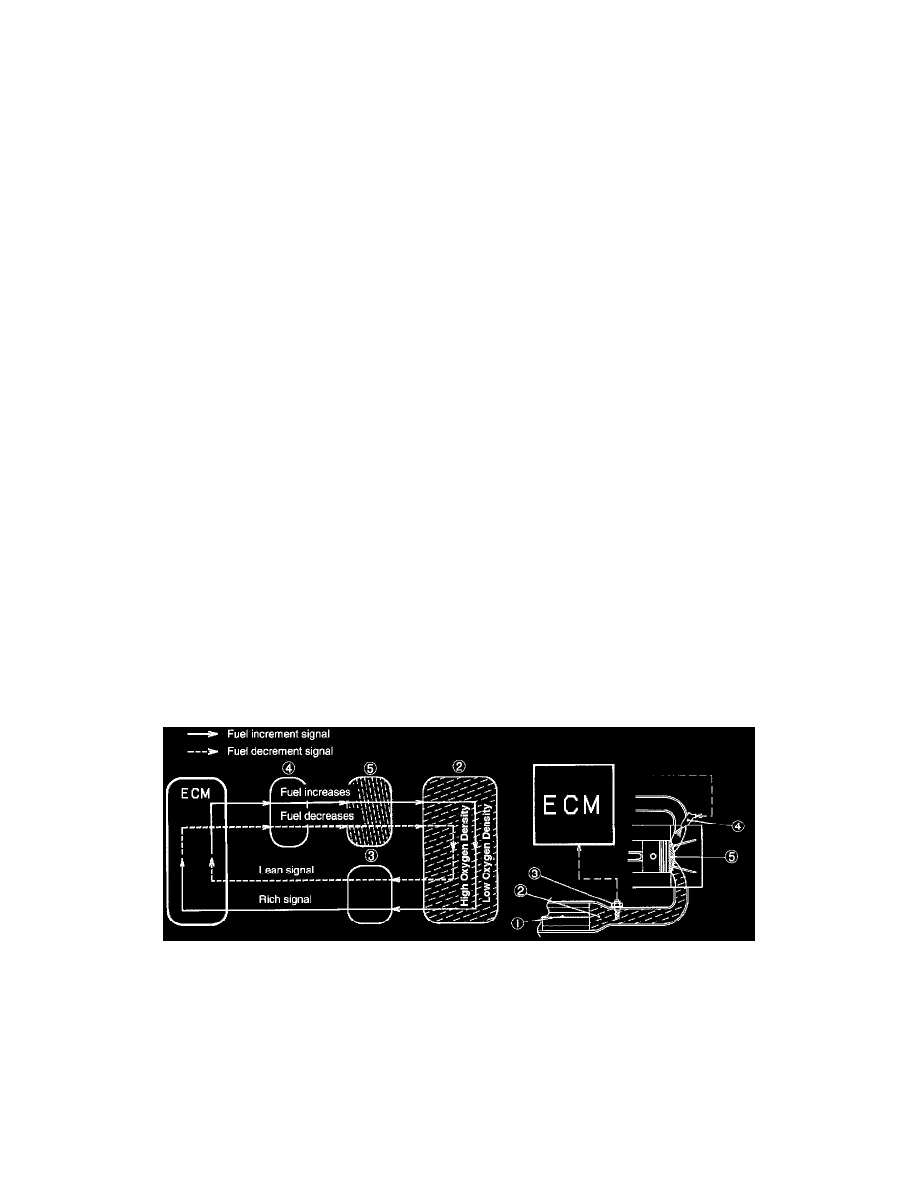Legacy GT LTD Sedan AWD F4-2.5L DOHC (1998)

Duration of fuel injection = duration of fuel injection during engine starts.
b. During normal operation:
Basic duration of fuel injection x correction factors + voltage correction time.
Basic Duration Of Fuel Injection
The basic length of time fuel is injected. This is determined by two factors - the amount of intake air detected by the mass air flow sensor
and the engine speed (rpm) monitored by the crankshaft position sensor.
-
Duration of fuel injection during engine starts.
Determined according to the engine coolant temperature detected by a signal emitted from the engine coolant temperature sensor to
improve starting ability.
-
Voltage correction time.
Compensates for the fuel injector's time lag affected by the battery voltage.
2. Correction Factors.
Correction factors are used to correct the basic duration of fuel injection so that the air-fuel ratio meets the requirements of varying engine
operations.
These correction factors are classified as follows:
a. Air-Fuel ratio coefficient:
Allotted to provide the optimum air-fuel ratio in relation to engine speed and the basic amount of fuel injected.
b. Start increment coefficient:
Increases the amount of fuel injected only when cranking the Engine, which improves starting ability.
c. Engine coolant temperature increment coefficient:
Used to increase the amount of fuel injected in relation to a signal emitted from the engine coolant temperature sensor for easier starting of a
cold engine. The lower the engine coolant temperature, the greater the increment rate.
d. After-start increment coefficient:
Increases the amount of fuel injected for a certain period of time immediately after the engine starts to stabilize engine operation.
The amount of fuel to be compensated for depends on the water temperature during engine starting.
e. Full increment coefficient:
Increases the amount of fuel injected by a signal emitted from the throttle position sensor in relation to a signal emitted from the mass air flow
sensor.
f.
Acceleration increment coefficient:
Compensates for time lags of air flow measurement and/or fuel injection during acceleration to provide quick response.
AIR/FUEL RATIO FEEDBACK COEFFICIENT "ALPHA"
This feedback coefficient utilizes the front oxygen sensor's electromotive force (voltage) as a signal to be entered into the Engine Control Module
(ECM). When low voltage is entered, the ECM judges it as a lean mixture, and when high voltage is entered, it is judged as a rich mixture. In
other words, when the air-fuel ratio is richer than the stoichiometric mixture ratio, the amount of fuel injected is decreased. When it is leaner, the
amount of fuel injected is increased. In this way, the air-fuel ratio is compensated so that it comes as close to the stoichiometric mixture ratio as
possible on which the three-way catalyst acts most effectively. (Carbon Monoxide, Hydrocarbons, and Oxides of Nitrogen (CO, HC, NOx) are
also reduced when the air-fuel ratio is close to stoichiometric mixture ratio.)
(1) Front Catalyst
(2) Exhaust Gas
(3) Front Oxygen Sensor
(4) Fuel Injector
(5) Combustion Chamber
LEARNING CONTROL SYSTEM
-
In a conventional air-fuel feedback control system, the basic amount of fuel injected (according to engine speed and various loads) is stored in the
memory. After the Engine Control Module (ECM) receives a signal emitted from the oxygen sensor, the basic amount of fuel injected is corrected
so that it is close to the stoichiometric mixture ratio. This means that the greater the air-fuel ratio is corrected, the lesser the control accuracy.
-
In Subaru engines, however, an air-fuel ratio learning control system constantly memorizes the amount of correction required in relation to the
